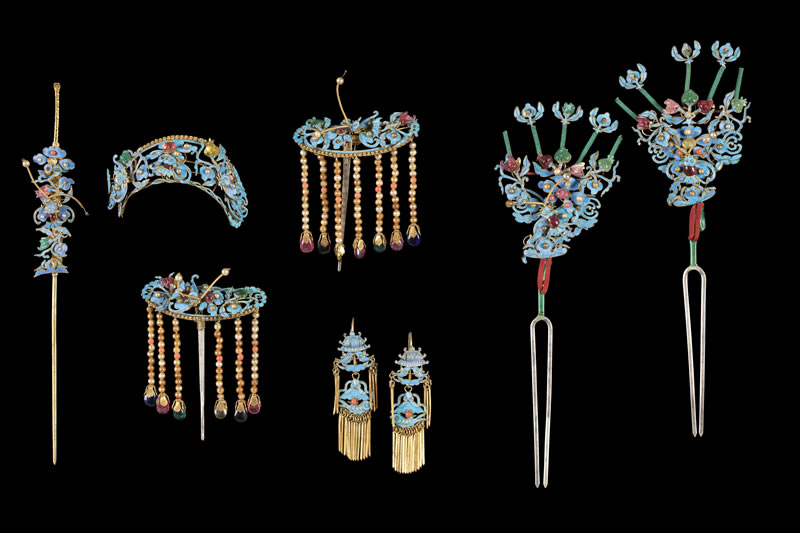In China, symbolism, art and culture are intimately intertwined. Therefore, nothing is left to chance, especially as regards fashion, which hides very specific art and tradition.
Hair ornaments, especially hairpins, play very specific roles in a woman’s life. First of all, a woman could not wear a hairpin before she was 15 years old: on her 15th birthday, the so-called “hairpin ceremony” marked the transition from childhood to adulthood, when women could get married. Her hair was thus styled differently: the braid would become a bun that was held by a hairpin or Ji.
Starting from the Han dynasty, on their wedding day or when they had to part, the spouses or the fiancés used to break a hairpin in order to symbolise their intimate bond. The pin was then put back together when they would meet again. For their engagement, the woman used to give her hairpin to her groom as a gift.
Women of high rank used to wear a hair clip called buyao (literally “that swings when moving”). It was richly decorated and had many charms made with pearls or gems that would elegantly swing when the woman was walking. A buyao was usually made of gold or gilt silver, pearls and jade.
The style, the materials used and the artistry of these ornaments reflected the social status of the woman who was wearing them. The subjects they depicted were meant to bode well or to wish success, longevity, fortune, richness through flowers, animals, objects or writings.
The auction that will be held in June will feature a group of Chinese hair ornaments (Ji and Buyao) from the Nineteenth century made in gilt filigree and enamels with pearls, semi-precious stones with flower decorations and bats.

